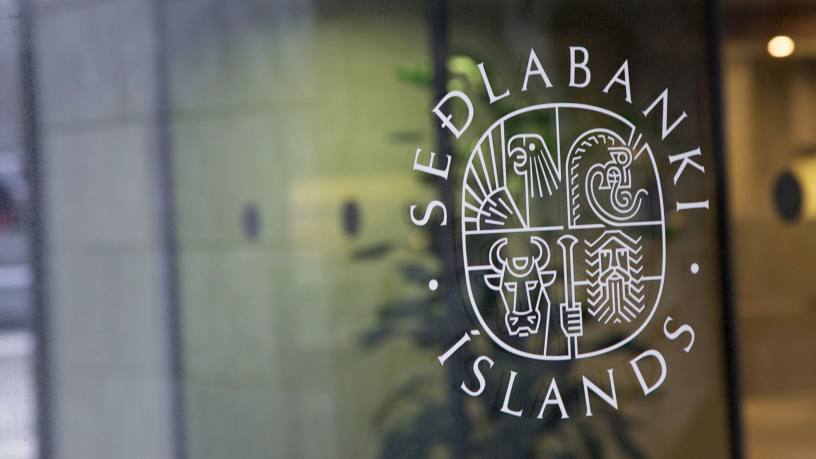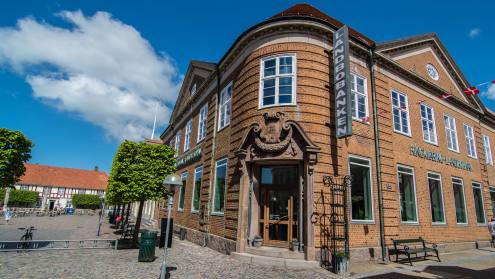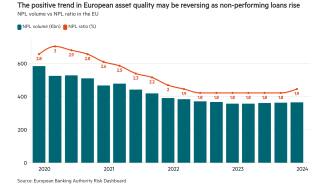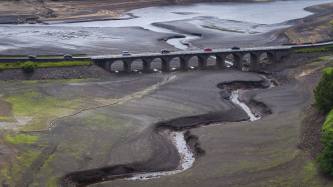It is 9:30am on a dark winter’s morning in Iceland and Arion Bank’s CEO Benedikt Gíslason is drinking what looks like a green, vitamin-rich smoothie. Being in charge of one of Iceland’s three most important banks obviously takes stamina, but these are halcyon days for Iceland’s banks compared to 2008. In the midst of the global financial crisis, its banking system shrank by 80%, with three of its major banks — Kaupthing, Glitnir and Landsbanki — defaulting and being taken over by the state.
Following their collapse, capital controls were put in place to prevent large outflows of money, specifically the domestic holdings of the failed Icelandic banks. The controls were only lifted in 2016, after agreement was reached to voluntarily relinquish Icelandic banks’ krona assets to the state. Mr Gíslason was previously vice-chairman of a government taskforce charged with liberalising the controls imposed on Iceland’s banks in the wake of the crisis.
“Lifting the capital controls on Icelandic banks was very complicated,” he recalls. “Luckily, it ended up as a consensual solution without any legal implications, as that helped Icelandic banks gain access to capital markets internationally, which was good for credibility.”
From the ashes of one of the biggest systemic banking collapses in global economic history, emerged three new commercial banks — Landsbankinn, Íslandsbanki and Arion Bank — the three biggest banks by assets in Iceland. Since October 2015, two of these three have been primarily owned by the state, although in June 2021, the government sold 35% of its stake in Íslandsbanki — marking Iceland’s largest ever initial public offering (IPO), which attracted strong domestic and international investor interest. The IPO valued the bank at $1.3bn.
In March 2022, the state sold a further 22.5% stake in Íslandsbanki via an offering just for professional investors, but it was heavily criticised by opposition MPs given the shares’ low price (they were sold at a 5% discount from their market value) and concerns about a lack of transparency. An Icelandic National Audit Office report published in November, which investigated the sale, concluded that “a higher price” could have been obtained for the bank, and that “subjective judgement” was used when choosing offers to accept.
Lifting the capital controls on Icelandic banks ... ended up as a consensual solution without any legal implications
Remarking on how the March 2022 IPO was handled, Mr Gíslason says, “Of course, it is a concern. The credibility of our financial system as a whole is at stake. In hindsight, it should have been run similar to the 2021 IPO, which was a general offering to the public. Iceland’s capital markets are probably too small and international interest too limited to run an accelerated book-building process only for institutional investors for a state-owned banking asset.”
Even the International Monetary Fund (IMF) weighed in on the privatisation of Iceland’s state-owned banks, stating in a June 2022 staff report that future plans for divesting more ownership should “ensure fitness and probity of potential investors”, and that ownership criteria should mitigate potential reputational and stability risks.
But Iceland’s banking system is in a much stronger position today than it was back in 2008. “The three large commercial banks are strong,” Iceland’s central bank stated in its September 2022 financial stability report. “Their returns on regular income have increased, their cost-to-income ratios are down, and household and corporate arrears have declined. The banks’ asset quality is improving, reflecting this year’s rapid economic rebound. Their capital ratios are high.”
Impressively, Iceland’s three systemically important banks have higher common equity Tier 1 ratios, well in excess of the European average, which sits at 14.96%, according to the European Central Bank.
Tourism rebound
During the pandemic, some of Iceland’s banks wrote down their exposure to the tourism sector, which accounts for almost 40% of Iceland's annual export revenue. “We had a lot of exposure to tourism, which was 13% of our loan book,” says Jón Guðni Ómarsson, chief financial officer at Íslandsbanki. “We said all exposure to tourism is an increased risk, so we impaired quite heavily against it — Ikr6bn ($42m).”
We said all exposure to tourism is an increased risk, so we impaired quite heavily against it — Ikr6bn ($42m)
He continues: “We have a lot of investment in tourism and the building of new hotels. Today, there are not as many new projects. Half our loan book is in residential mortgages. The rest is small and medium-sized enterprise and corporate lending across industries.”
Similarly, Arion Bank, the third largest bank in Iceland by Tier 1 capital, had to restructure some of its exposure to the tourism sector, but Mr Gíslason says tourists returned in their droves to Iceland this summer. “Tourism really took off again and we have been able to develop quite an advanced and high-end tourist offering on a small island,” he says. “We have also been successful in building up other industries which contributed relatively little to our export revenues historically — so companies not only within the seafood industry, but also fish farming, pharmaceuticals and software.”
Resilient to shocks
Off the back of higher interest rates imposed by Iceland’s central bank to combat rising inflation, Arion Bank’s net interest income increased by 31% in the third quarter of 2022, compared with the third quarter of 2021. “In many respects Iceland is in an enviable position at the moment, particularly compared to many of our neighbours,” Mr Gíslason stated in the bank’s third-quarter results. “Following Russia’s invasion of Ukraine, many of Iceland’s neighbouring countries are dealing with high inflation, not least as a consequence of rising energy prices. We are fortunate to have our geothermal energy and hydropower, both sustainable resources, and this has proven invaluable to us.”
Speaking to The Banker, Mr Gíslason says household savings rates are much higher, and debt ratios are much lower from an historical standpoint. But because Iceland’s central bank was a little ahead of the curve in raising rates, as it started hiking rates aggressively in May 2021. Mr Gíslason says it may start to see the impact of that on credit quality before other banks in Europe. However, it is not seeing any signs yet, he adds.
In its June 2022 report, the IMF warned that while Iceland’s financial system is able to absorb “adverse shocks”, risks had risen due to surging house prices in Iceland. “A sharp correction in house prices could weaken the balance sheets of households and the financial sector,” it stated.
Mr Ómarsson says Íslandsbanki has moved some customers onto other products to ensure they are still able to repay their loans. But he is encouraged by Iceland’s strong economic fundamentals: “We have low unemployment, a substantial amount of savings and large pension pots, which benefit from decent returns,” he adds.
Financial recovery
Considering how well the small island economy has fared recently, it is difficult to imagine that just 14 years ago, its banking system imploded and its currency, the krona, plummeted by 50%. Yet, despite the gains that have been made, rebuilding trust in Iceland’s banking sector is still a work in progress.
“The Scandinavian social contract is built on trust in institutions. That trust has been broken and is both a long and tedious task to repair,” says Ásgeir Jónsson, governor of the Central Bank of Iceland. One of the things that demonstrates this lack of trust, he says, is the increase in the outstanding stock of bank notes after the crisis. Another indication is the growing fragmentation of the political system with the increase in the number of parties represented in parliament, as well as a more polarised national discourse. This, however, is not specific to Iceland, he adds.
Iceland’s leading commercial banks acknowledge they need to do more to win back customers’ trust. “Trust has not been regained and rebuilt to the same levels as before,” says Mr Gíslason. “Trust is built on being prudent and being a good corporate citizen.”
Having spent 2013–2016 working as a senior advisor for Iceland’s Ministry of Finance and Economic Affairs, where he helped liberalise the capital controls on Iceland’s banks, this challenge is personal for Mr Gíslason. “I was involved in trying to prevent [the crisis] from happening again,” he says. “The ramifications were dire; you don’t want your kids to have to go through that.”
Acknowledging that it will take time to restore confidence, Mr Ómarsson says Íslandsbanki continues to service clients as best it can by being open and more transparent in terms of pricing. “We publish fees on our website. We have a broad product range, which we try to make as simple as possible,” he says.
New entrants
When it comes to banks’ fee schedules, which can be long and complicated, Mr Gíslason says Iceland’s banks could learn from the example set by new market entrants, such as indó, which has a simple product offering. indó is Iceland’s first challenger bank, which emerged from stealth mode back in February, with seed funding of $4.5m. Licensed as a savings bank — the first new banking licence to be issued in the country since 1991, according to indó’s CEO and founder Haukur Skúlason — it offers retail customers a debit card and savings account, as well as a completely digital banking experience.
At the time of writing, Mr Skúlason says indó had signed 4000 customers, with another 8000 on the waiting list. “But we’ve had to fight tooth and nail for every customer,” he says. indó has wooed customers with the promise of no hidden fees for foreign exchange or overseas transactions, and interest higher rates on savings.
The challenger bank is the culmination of a decade’s work at major Icelandic banks in various capacities, and Mr Skúlason’s desire to offer customers a simpler and more transparent banking experience. “Banks say bring me your salaries and we will pay you a price which doesn’t reflect interest rates in the real economy,” he says. “It is a source of cheap funding for the banks, so they can do more interesting stuff on the asset side [by taking risks with customers’ deposits]. This is what we want to change.”
Síminn Pay, the payments arm of Iceland’s largest telecom operator, Síminn, is also venturing into financial services traditionally offered by banks. In November, the buy now, pay later (BNPL) provider became the first non-financial institution in Iceland to issue its own credit card. The telco has 110,000 customers out of a population of just 370,000. Its BNPL service, which it launched in 2019, has 18,000 customers and within days of launching its virtual credit card in November, it had signed more than 1000 customers, according to Gunnar Hafsteinsson, managing director of Síminn Pay.
“We are a strong and trusted brand,” he says. “So, people who need banking, credit and other services may be more inclined to try us because of their distrust of the banking system.”
Fintech partners
Síminn Pay worked with Enfuce, a Finnish card-as-a-service provider to build out its virtual credit card offering. Mr Hafsteinsson said he approached Iceland’s banks, but they were unable to find common ground. “Banks are somewhat active in the fintech space, but it is hard for them to align partnerships with their day-to-day operations,” he says. “The benefits of new companies such as Enfuce means that we can look elsewhere for specialised partners for services such as card issuing.”
But Íslandsbanki and Arion Bank say they are working with fintechs. “We have worked with fintechs like Meniga and are definitely open to that,” says Mr Ómarsson. “And we’ve invested heavily in our infrastructure in the past three to five years, to make sure we are very competitive — especially in payments — making loans more accessible, and improving our app and online banking. We’re focused on improving services and being the best in class across the board.”
Íslandsbanki is making large investments in robotics to simplify things and save costs, according to Mr Ómarsson. “At the same time, we are a universal bank providing a large number of products, which entails higher costs due to more regulatory scrutiny. A question we often ask ourselves is can we be everything to everybody?” he says, adding that the bank has reduced the number of branches in recent years and now has the most efficient branch network in Iceland.
Arion Bank has invested in fintechs such as Leiguskjól, which sells guarantees for renters and various other services for both renters and landlords. In 2015, the bank acquired Iceland’s fourth-largest retail insurer, Vörður, which has been fully integrated into Arion’s headquarters and banking app as part of the bank’s full bancassurance model.
“Vörður is the fastest growing insurance company in Iceland and our plan is to develop it further to increase our market share in retail banking,” says Mr Gíslason, adding that he sometimes refers to Arion as the biggest fintech company in Iceland.
Mr Gíslason says the bank will continue to invest in fintechs in Iceland that offer the best solutions for its customers and that can scale their solutions into other Nordic markets. “What amazes me is to see what these companies can achieve with limited funding. They are agile and have no legacy,” he says. “It is inspiring and a reminder to continue to invest in our infrastructure to achieve better services at lower costs.”













